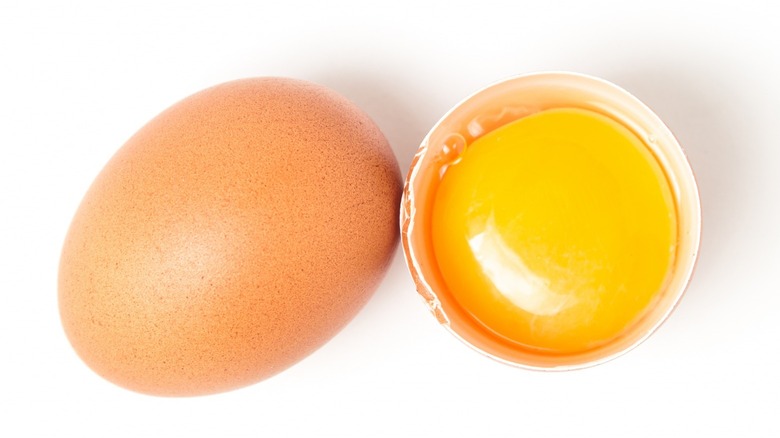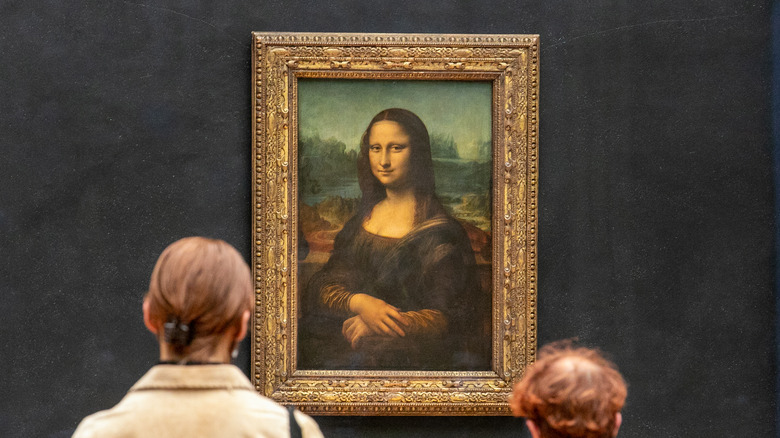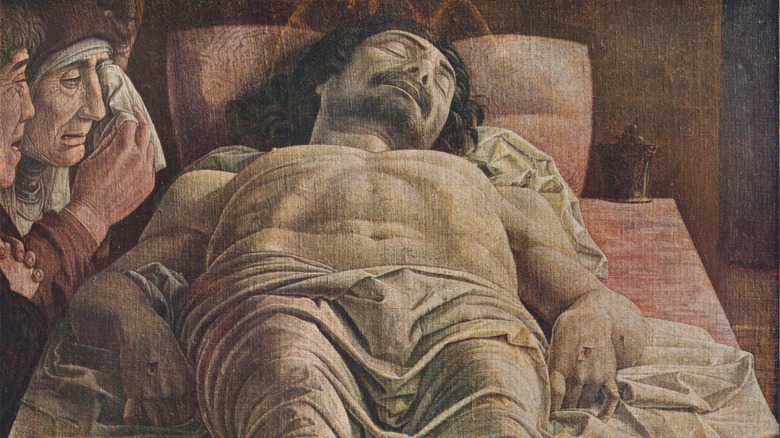There's Probably Egg In The Mona Lisa (And A Lot Of Other Iconic Paintings)
They might not always get the appreciation they deserve, but eggs are awesome. We don't need to rave about the versatility of eggs in cuisine, but it's amazing how this protein made its way from the pantry to our shampoo, vaccines, and fertilizer, among other things. Now, a team of researchers has discovered that it might have also found a place in some of the greatest Renaissance artists' palettes.
A study published in Nature Communications hints at this fascinating possibility. The Old Masters — think Leonardo da Vinci and Sandro Botticelli — might have added egg yolk to the paint they used to create some of their greatest masterpieces. Previously, it was believed that the protein residue found in some Renaissance paintings was a result of natural decomposition. But the latest study suggests artists might have intentionally used protein binders, potentially egg yolk, for a variety of advantages.
Artists have been using oil paints since around the 7th century. However, a major drawback was that it would sometimes wrinkle after application, as evidenced in the study that used da Vinci's "Madonna of the Carnation" as one of the examples. The theory is that da Vinci — and presumably other artists of the time — might have used egg yolk to rectify the problem. As the study suggests, "wrinkling of oil paints may also be avoided [by] adding egg to the paint formulation." So, we might have egg-laying birds to thank for the everlasting mystic smile of the lady in da Vinci's "Mona Lisa."
Egg yolk as an effective binder
Since there is no written account of the specific paint preparation techniques used by artists like Leonardo da Vinci, modern researchers did not fully understand the merits of using protein like eggs. However, by preparing model paints using linseed oil and egg yolk in pigments, the researchers discovered that the quality of paint, brushability, and durability can be vastly improved.
"The addition of egg yolk is beneficial because it can tune the properties of these paints in a drastic way. For example by showing aging differently: It takes a longer time for the paint to oxidize, because of the antioxidants contained in the yolk," study author Ophélie Ranquet told CNN.
Researchers also found that coating pigments with a layer of protein makes them resistant to humidity and ensures smoother application. "On the other hand, if you wanted something stiffer without having to add a lot of pigment, with a bit of egg yolk you can create a high impasto paint," Ranquet added. Oil paints can turn dark and yellow over time, but egg yolk can effectively reduce the unwanted effect.
Eggs and art go way back
As ingenious as it seems, the idea that the Old Masters might have used eggs to improve paint is not inconceivable since artists have been using eggs in paints for centuries. In fact, the usage of egg-based pigments dates back to ancient Egypt.
Egg-based tempera paint was also highly popular among Renaissance artists. Instead of oil, water was used to mix egg yolk and pigments into a smooth paste. Although egg tempera has several advantages over oil-based paints — like light resistance and color durability — due to a thinner consistency, it cannot be used for impasto technique (think "The Starry Night" by Vincent van Gogh).
Eggs were also used to generate photographic prints. In 1850, Louis Désiré Blanquart-Evrard invented the albumen process, which involved coating thin papers with a mixture of egg whites and sodium chlorides to develop images through contact printing. The resultant image would be purple or brown in color.
Artists gradually switched the tempera for oil-based paints in the 15th century due to their high viscosity and slow drying time. Oil paints allowed them to embrace realism, and a new era of innovation was set in motion.


